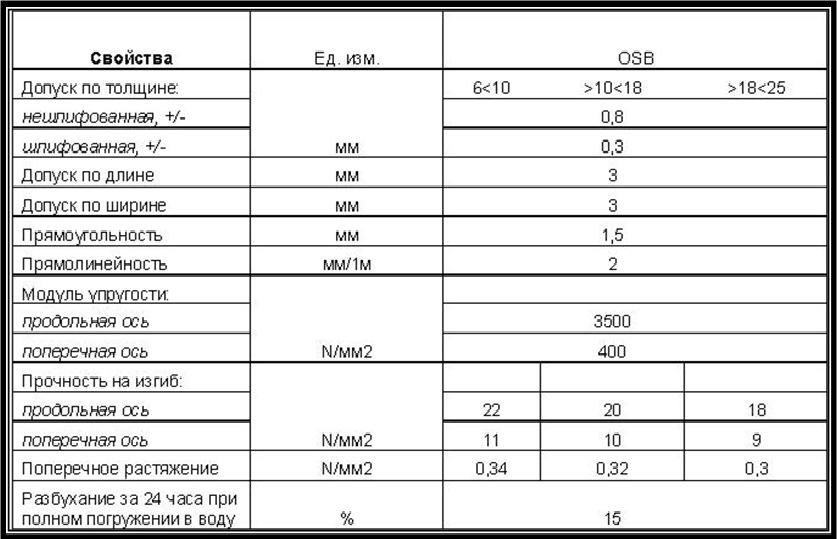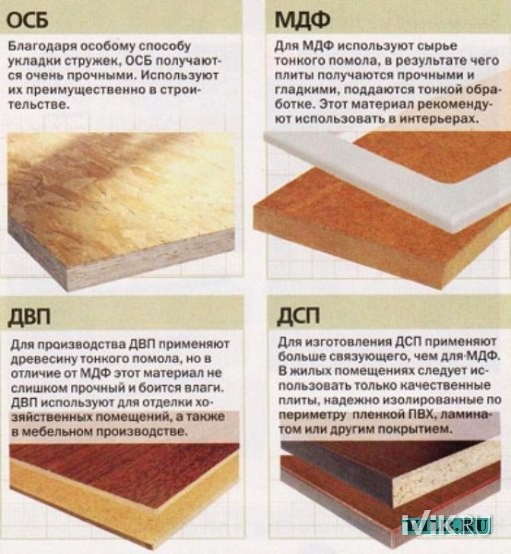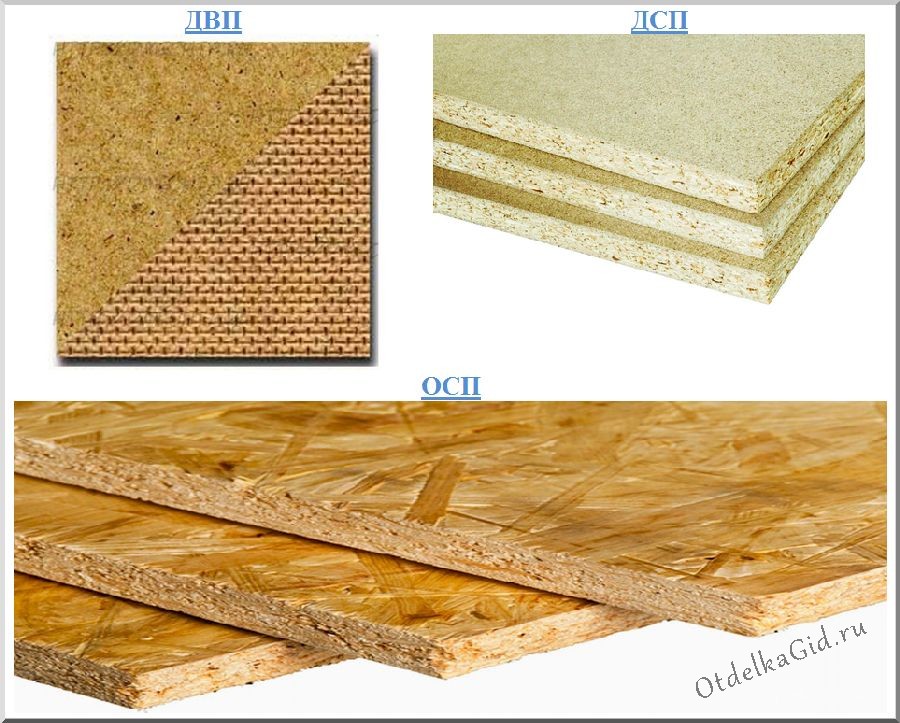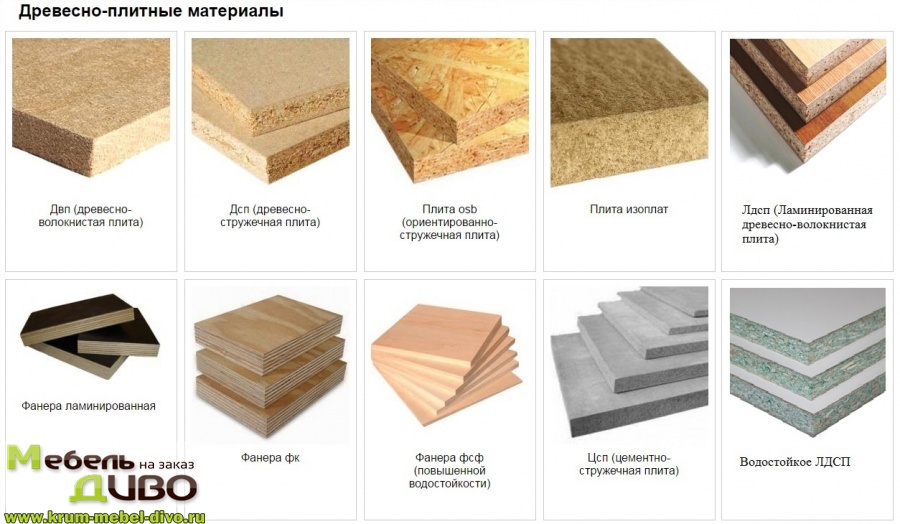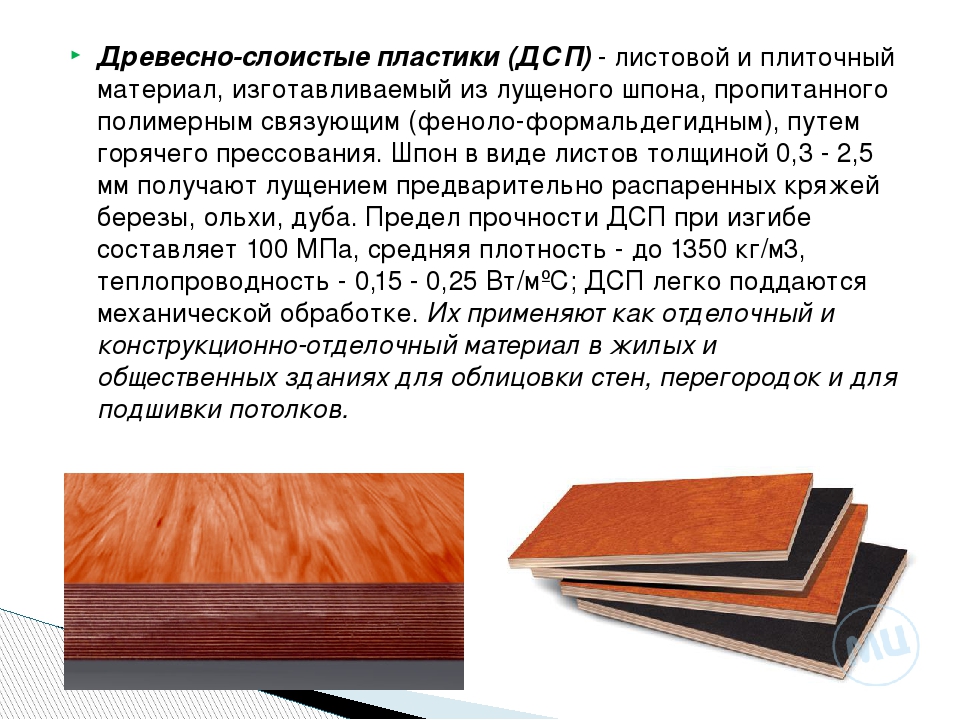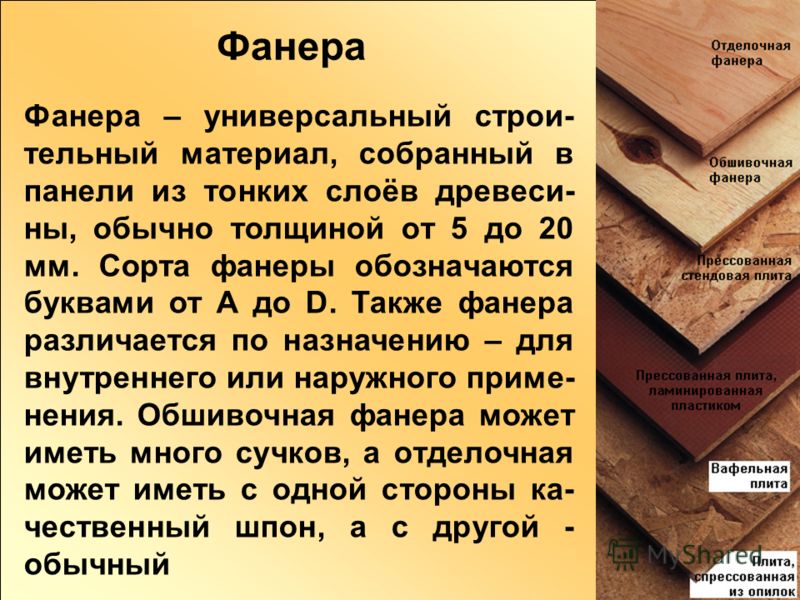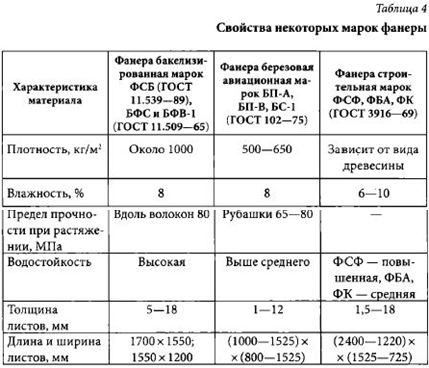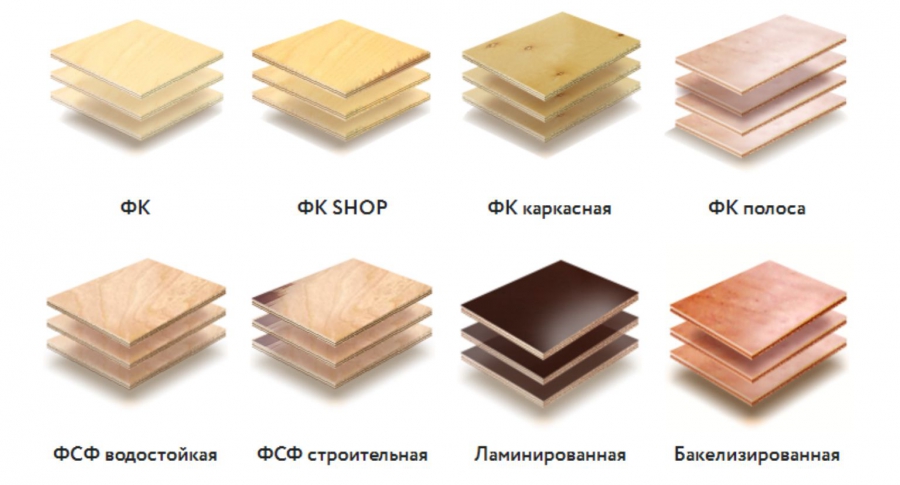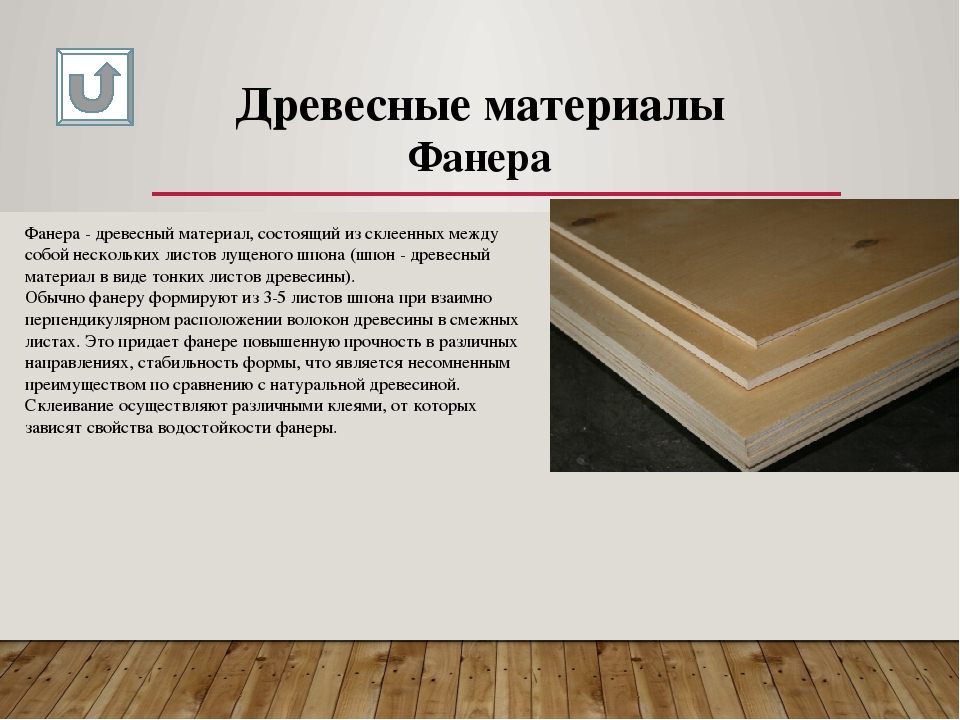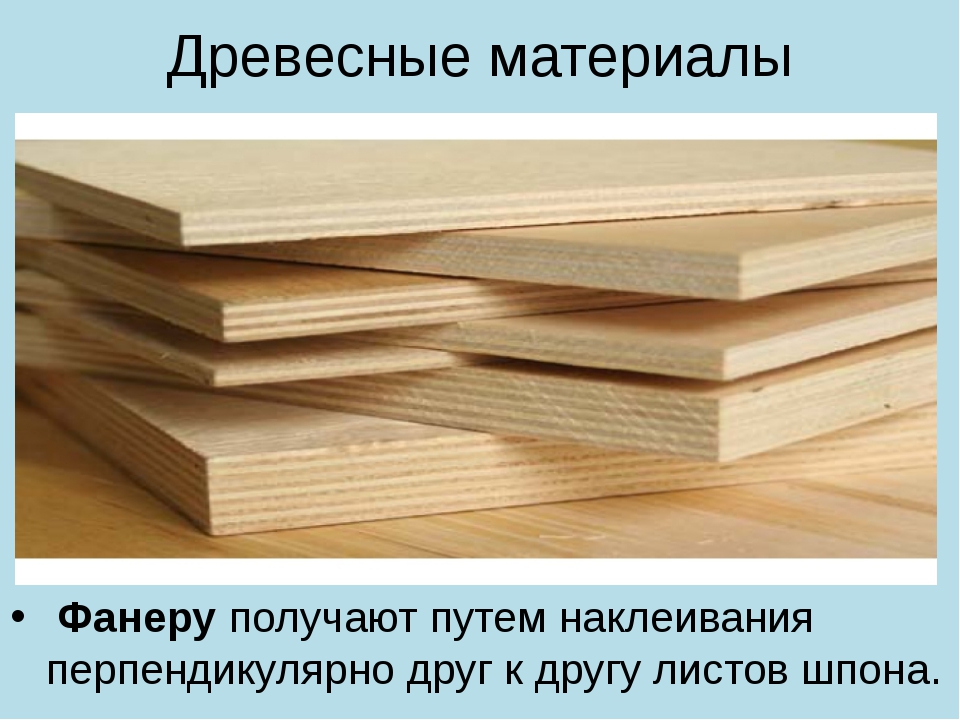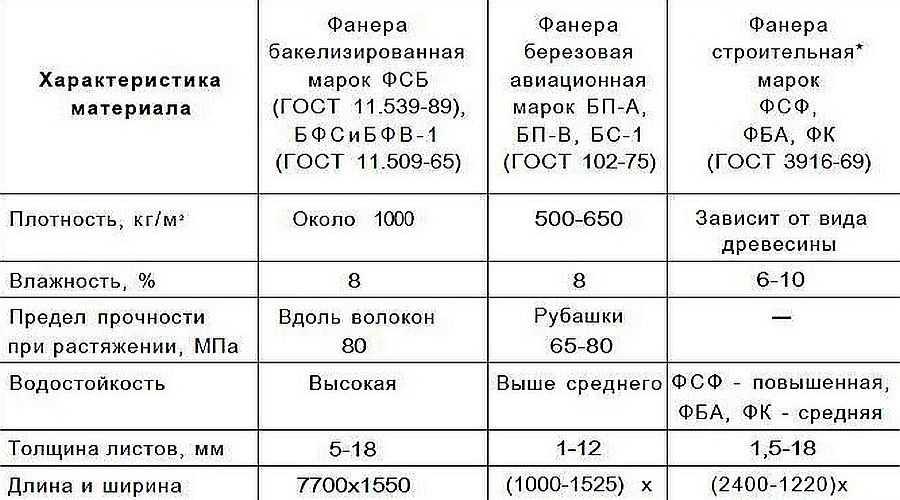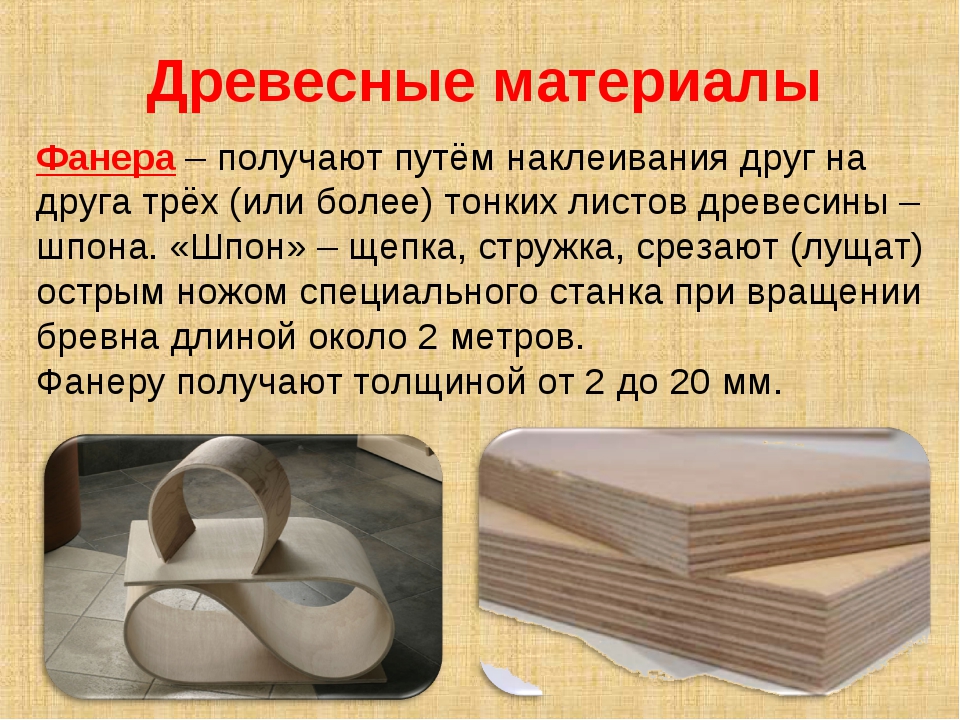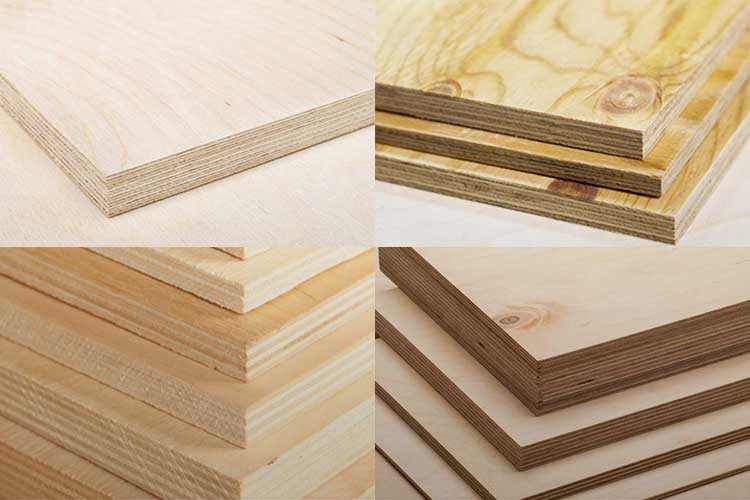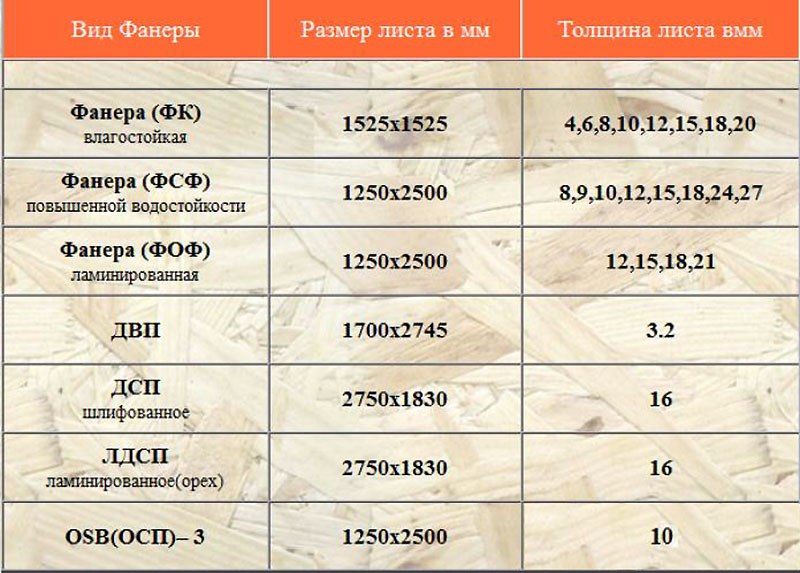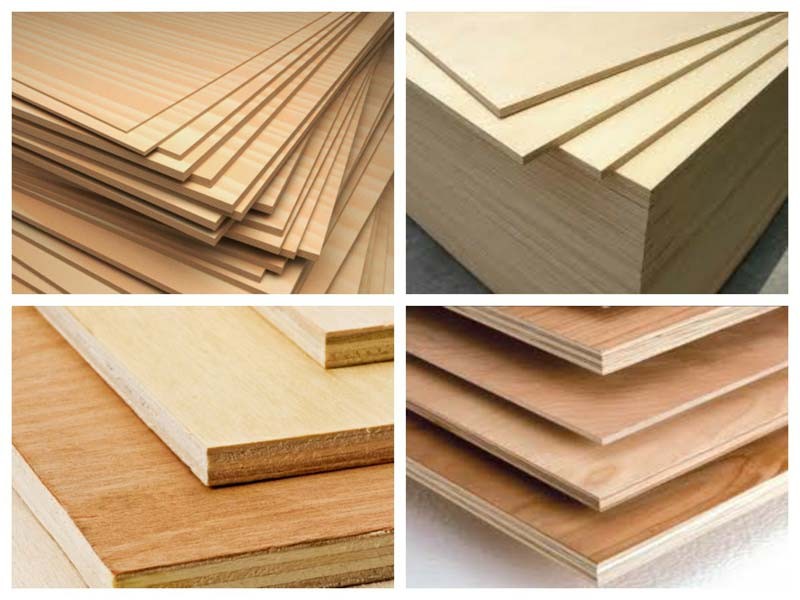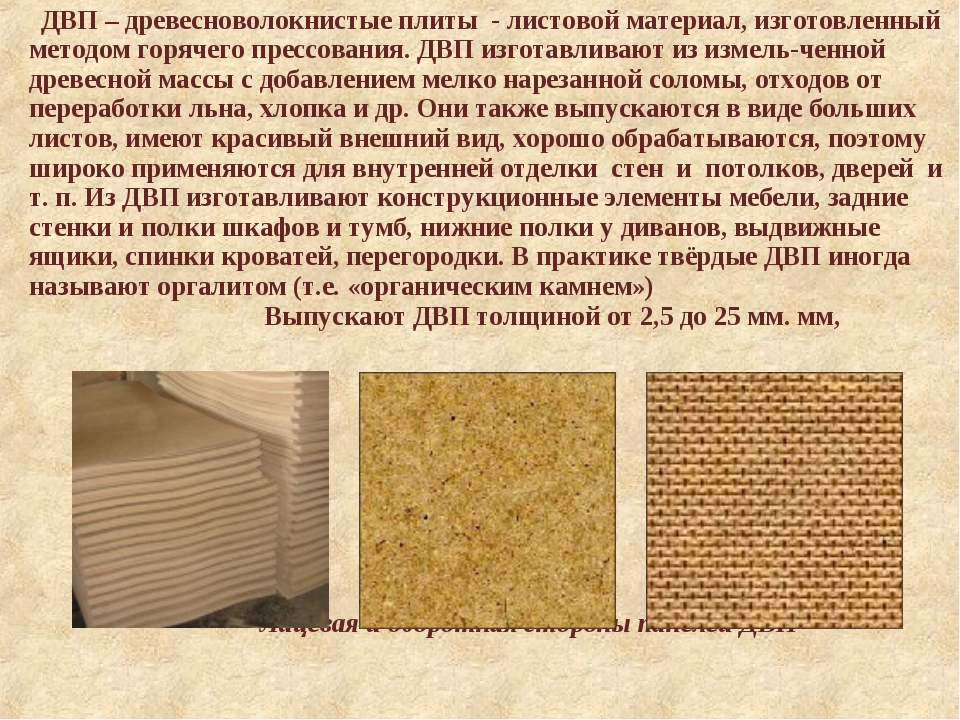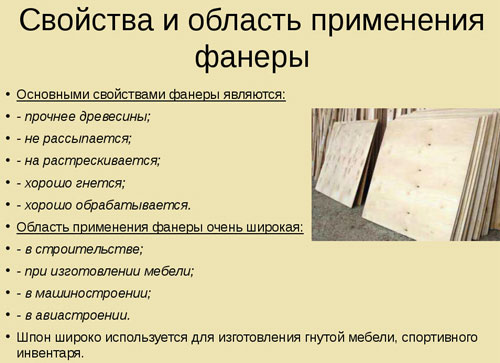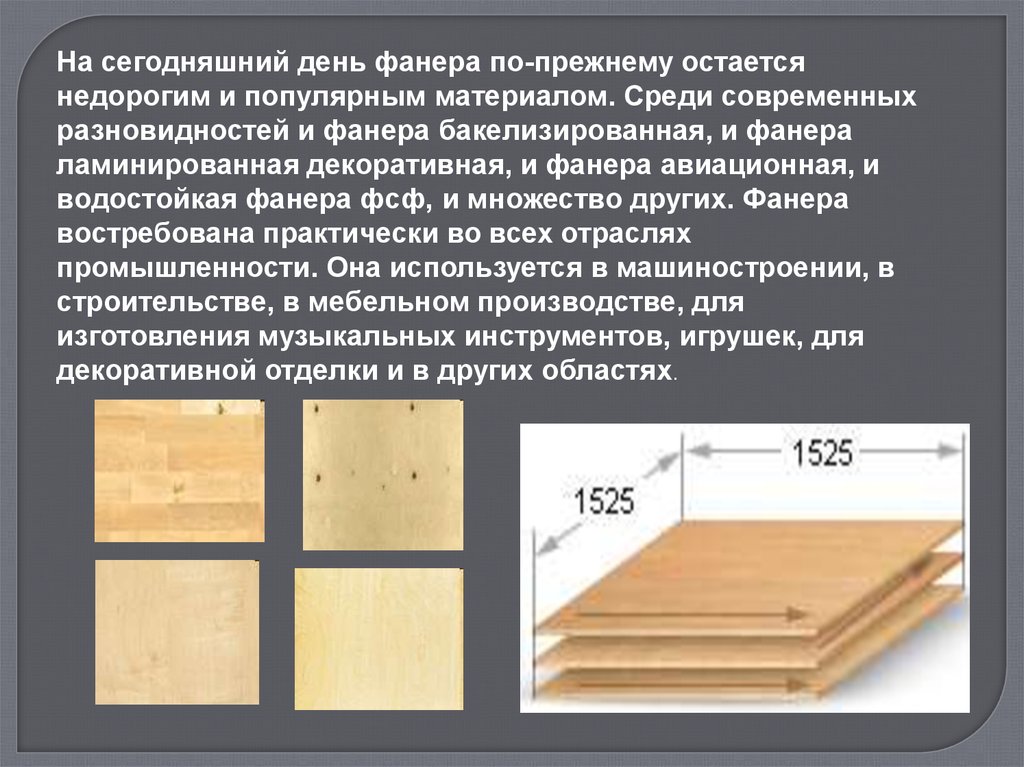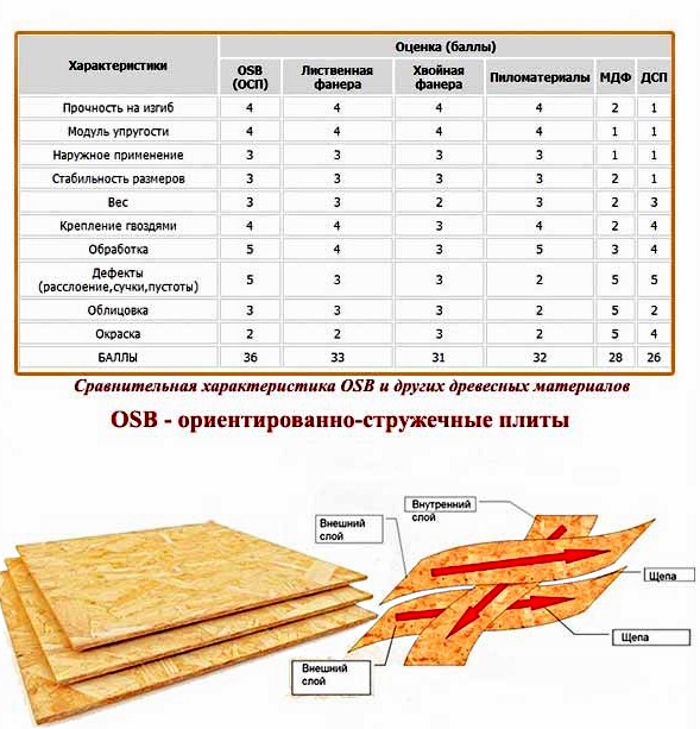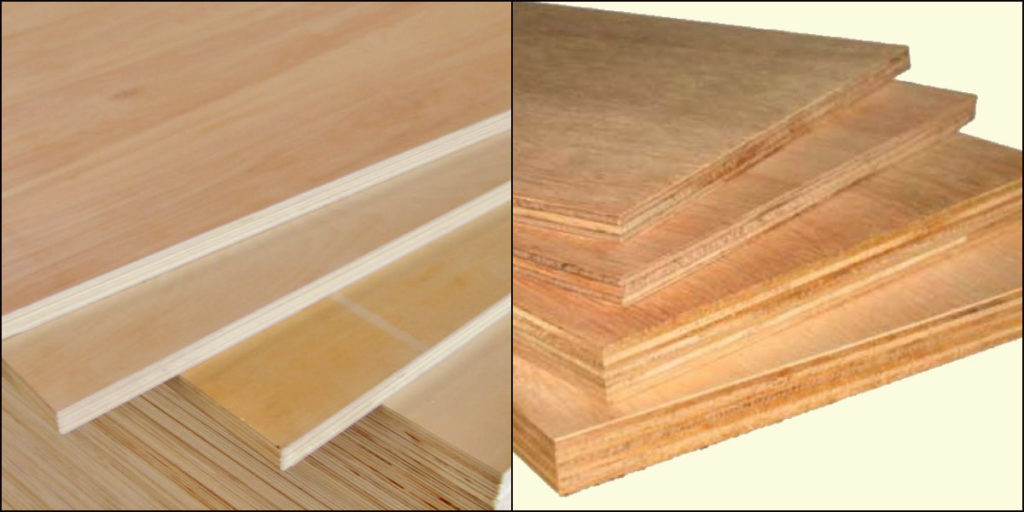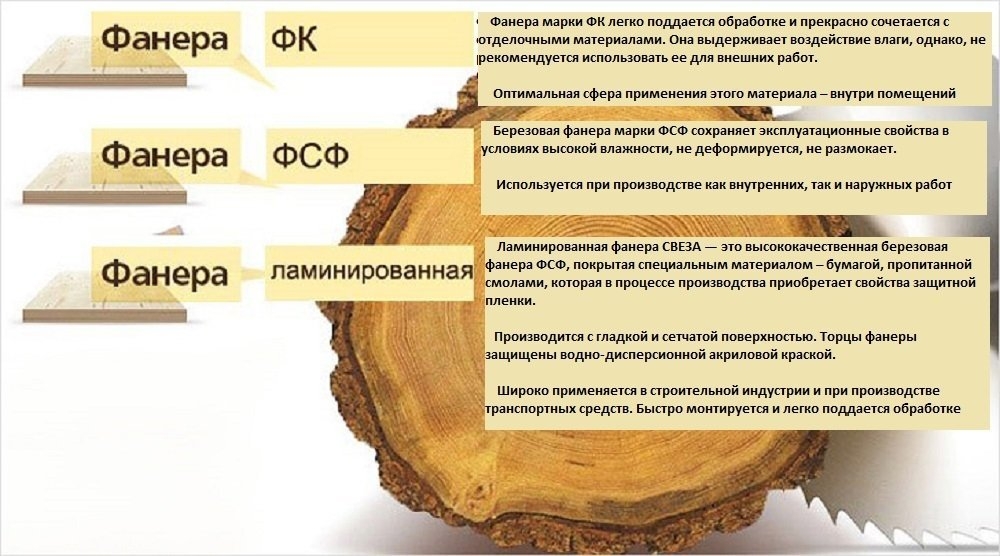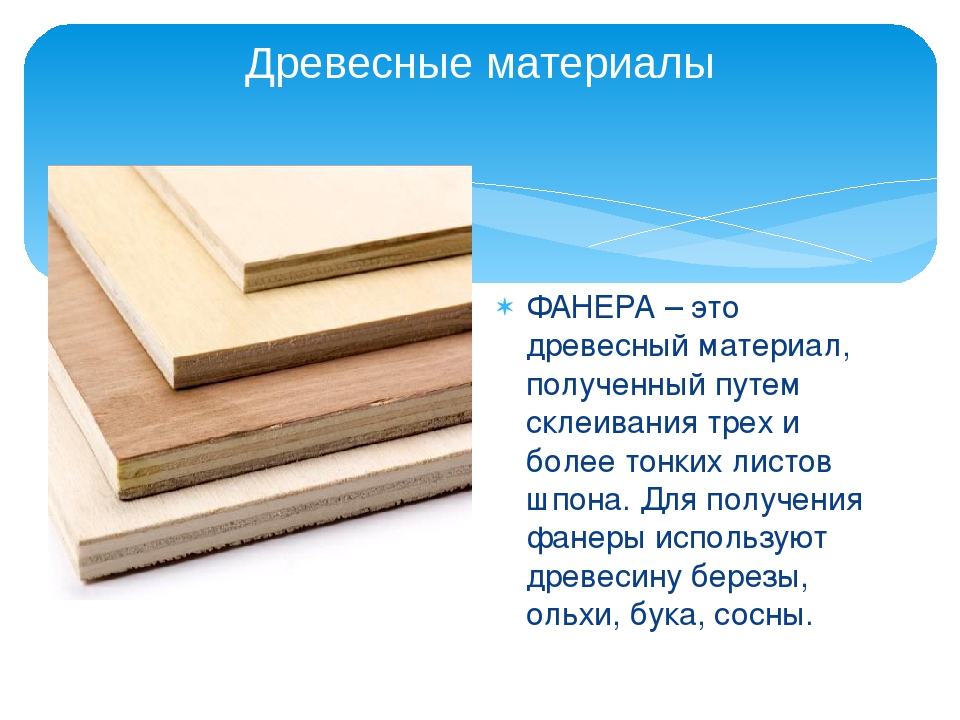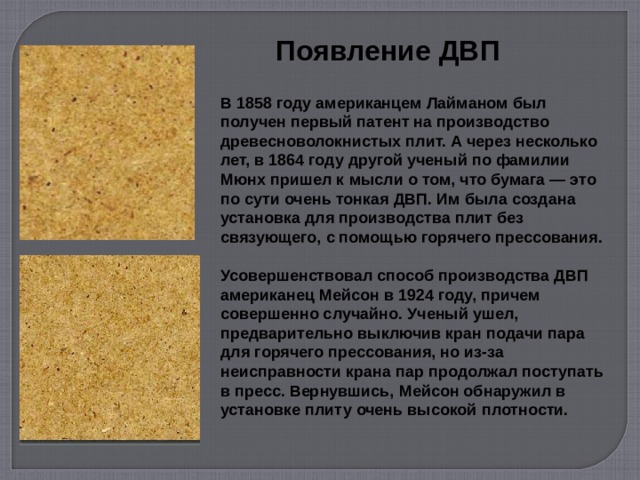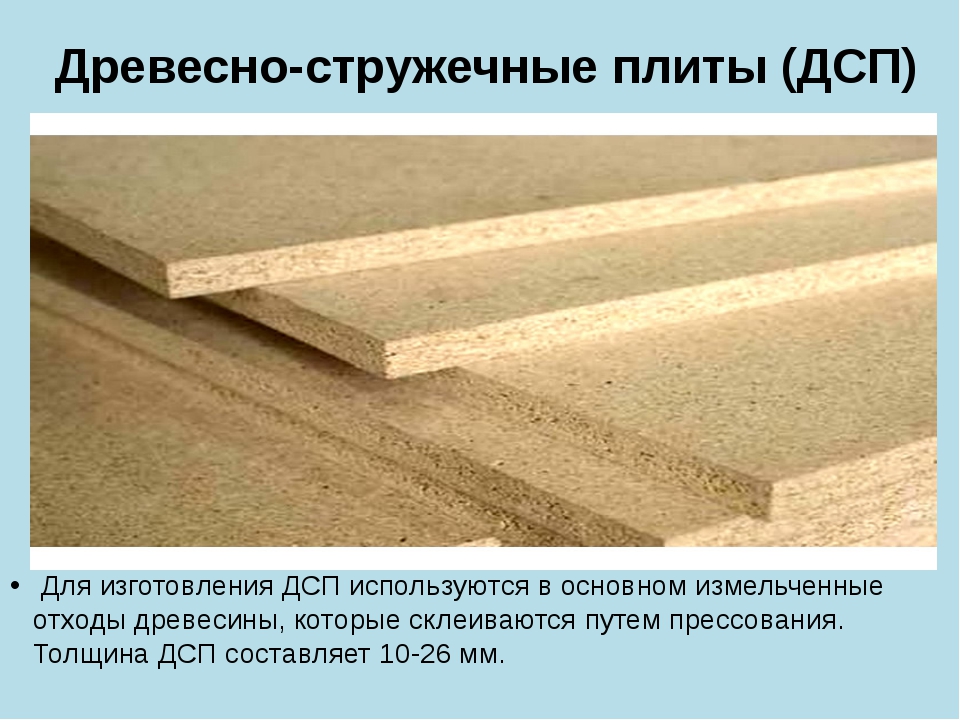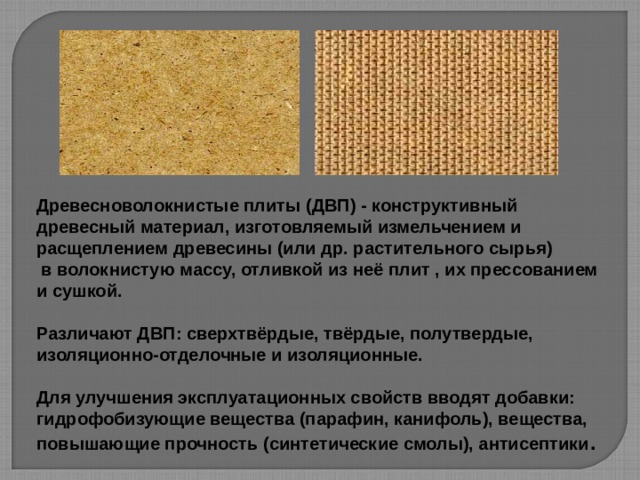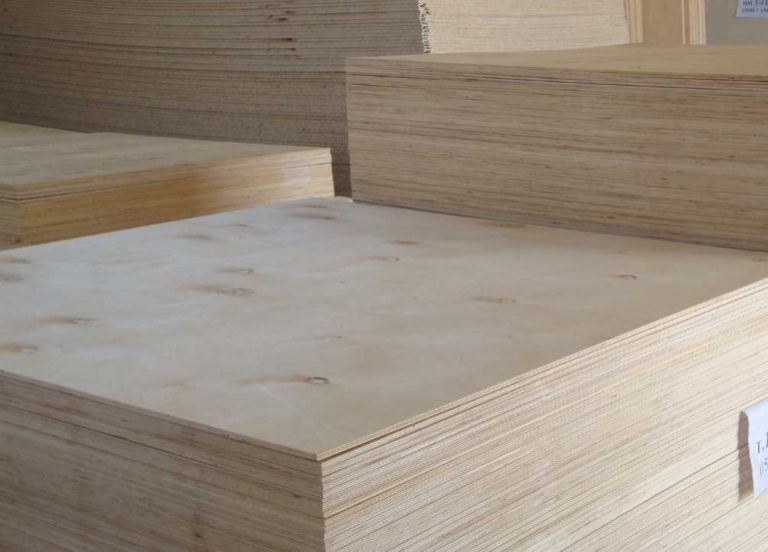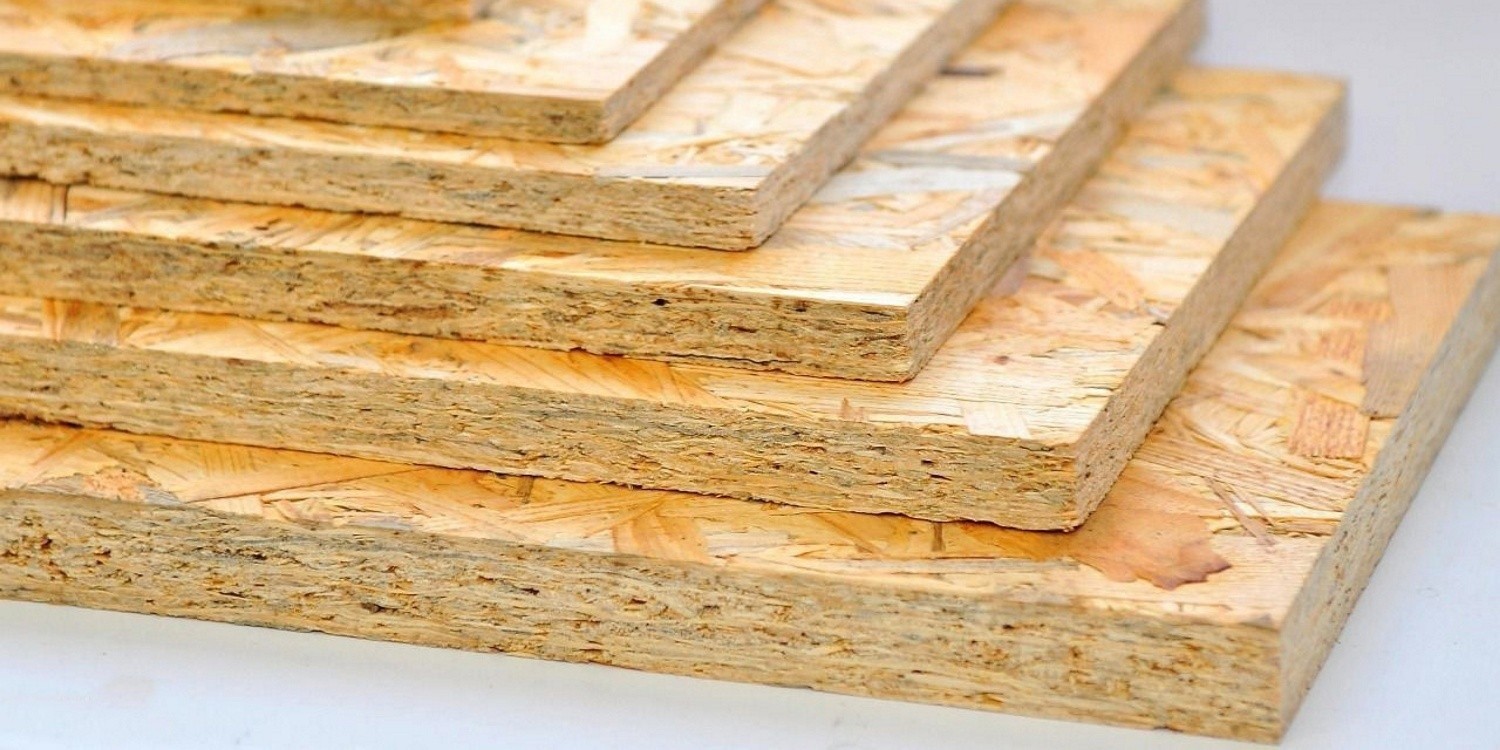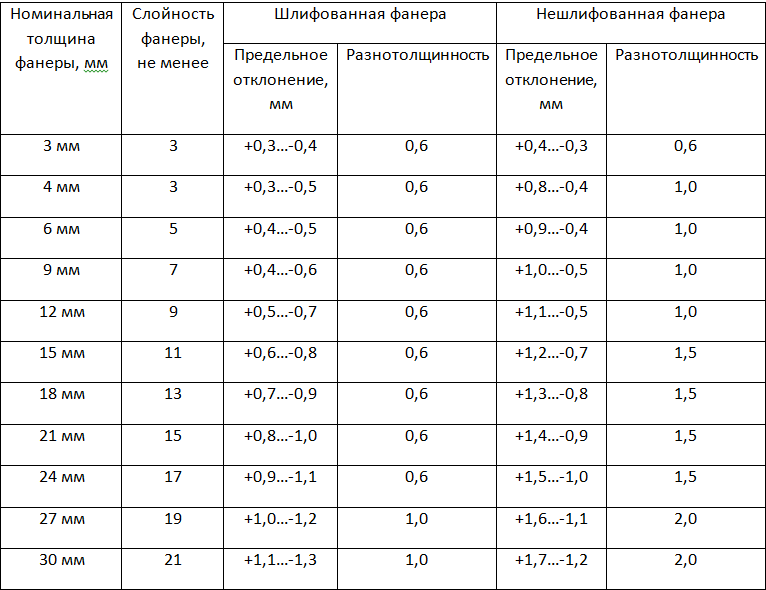Plywood grade and description
Plywood belongs to the category of expensive materials. To determine the quality, manufacturers began to assign the material to a certain grade, so that the consumer could choose the material and not overpay.
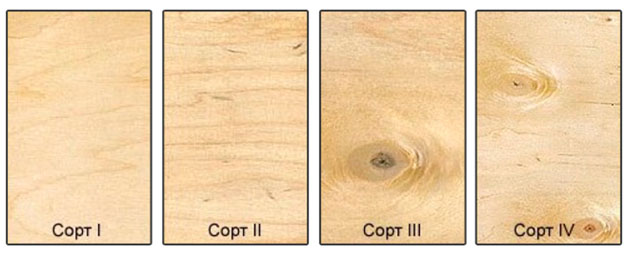 Plywood grade
Plywood grade
Variation of plywood sheets:
- Grade E. It is the best elite plywood without external and technical defects. Here, only minor and random deviations are permissible, depending on the characteristics of the structure and structure of the wood.
- Grade I. In accordance with GOST, the top layer cannot have more than three types of defects. Knots the size of a pin, falling out parts with a diameter of up to 5-6 mm, no more than 3 per 1 m² are considered acceptable. If there are cracks, then their length should not exceed 20 cm per 1 linear meter. The edge break on the sheet should not exceed 2 mm in width.
- Grade II. The number of defects allowed must be within six types. In addition to those permissible for the first grade, additional external defects are allowed in the form of traces of glue on the surface with an area of not more than 2% and small patches of wood.
- Grade III. The number of defects present should not exceed nine types. Among them there may be wood and double inserts, fiber breakthrough and cracks not exceeding 15% of the area. Admissible traces of glue on the surface within 5% of the total area of the material.
- Grade IV. Poor quality material, which may have the following defects: dropped knots, wormholes and cracks, sheet dents and edge breaks, traces of glue, hairiness and ripples on the surface.
Regardless of weediness, all types of plywood are used in construction, repair and in everyday life, rough and finishing. Fractional markings are allowed for manufacturers to indicate that one side of the plywood is of one grade and the other of the other.
Structure and main difference
Any plywood consists of layers of natural veneer, firmly glued together. The only difference is the wood that is used to obtain veneer, the method of arrangement of thin layers and the composition for gluing or impregnation. The sheet sizes do not depend on these parameters and may be the same for different species.
In FC plywood, veneer layers are glued with urea-formaldehyde glue. In FSF materials, gluing is carried out with phenol-formaldehyde glue resins. This is the fundamental difference between the types of FC and PSF, from which the corresponding consequences follow.
The external difference between FC and PSF is manifested in the color of the interlayer. The ends of the FC plywood are lighter, while the FSF has a dark reddish tint. This is explained by the fact that glue based urea becomes transparent when solidified, while formaldehyde resins are colored.
The difference between FSF and FC is as follows:
- adhesive composition;
- moisture resistance;
- strength;
- end color;
- price;
- content of hazardous substances.
And it all depends mostly on the glue. The carbamide composition dissolves in water, so FC plywood products are afraid of getting wet. FSF, unlike FC, is a moisture resistant material.
Of course, the cost will be influenced by the place of production, additional processing and some other factors. But the general trend can still be traced.
It should be noted that there is also another type of plywood - FOF. She belongs to the group of special purposes. The difference between FOF and FSF plywood is that the former is covered with a durable laminated film. Thus, its moisture-resistant properties are further enhanced.
How appropriate is it to use plywood
To answer this question, we will consider certain types of plywood sheets, because there are several of them, as well as the expediency of their use in residential premises.
How the product is made
In search of an answer, we need to turn to the process of making a plywood board, because initially most people see in plywood only an element of wood and an external finish for veneer, if any.
The production involves:
- Veneer layers. Wood, in fact, cannot be dangerous to humans, after all, we are talking about a natural, natural material.
- Adhesive component. It is precisely in it that the danger to a person may lie.
Among the glue that is used, we will distinguish three types:
- Formaldehyde.
- Phenol.
- Resorcinol.
In addition to these components, in the process of gluing the veneer, simple PVA glue was used, although it was quickly abandoned - the price of a plywood sheet glued in this way turned out to be too high. 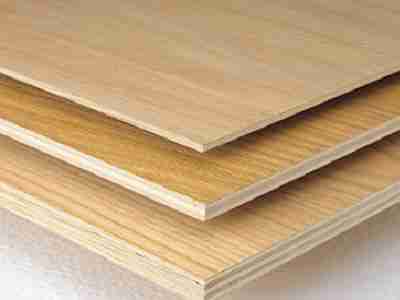 Plywood sheets
Plywood sheets
Hazardous components
So we have come to the heart of the question and the answer is unambiguous - a plywood sheet can pose a danger to human health!
Let's immediately determine that both phenol and formaldehyde contain toxic compounds in their formulas that can naturally harm health.  Formaldehyde is dangerous
Formaldehyde is dangerous
And no matter how small these doses are, because if we have a large area of application of plywood sheet, then the harm it can have on the state of the body increases in proportion to the number of plywood boards. As to what harm we can experience from plywood with the use of formaldehyde and phenol, here are the simple symptoms of poisoning:
As to what harm we can experience from plywood with the use of formaldehyde and phenol, here are the simple symptoms of poisoning:
- Headaches that begin to appear from being in a room covered with such a plywood sheet.
- Cough appears from frequent contact with sheets.
- Nausea, vomiting. This is already the stage of severe poisoning and it can come if you are in a room decorated with plywood boards with phenol and formaldehyde for a long enough time.
By the way, it is precisely on the basis of impregnation that all plywood boards can be divided into:
- Slabs for interior use, for decoration and furniture collection.
- Slabs for external work, for use in non-residential premises.
Now let's look at everything practically under a microscope.
So, we refer to safe types of plywood:
- FBA. The marking indicates that albuminocasein glue was used in the production, which is a natural product. Of course, this type of product is limited in use due to its low moisture resistance, but we can safely use it in the decoration of living quarters.
- FC. Safe cabamide glue is used here, the instructions for using this type of plywood allow us to work inside residential premises.
- FB, this type is produced using bakelite varnish. Despite the fact that plywood impregnated with this composition is maximally ready to resist aggressive environments, it is safe for our health and can be used in living quarters, kitchens, saunas.
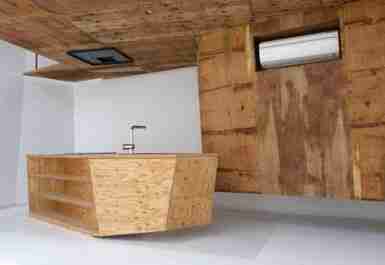 Original interior from plywood sheet
Original interior from plywood sheet
There are several other types of plywood sheet that are impregnated with bakelite glue, and to give credit to this glue, each plywood sheet has incredible technical characteristics.
Yes, this affects the price, and they are not always rational for use simply in ordinary internal work, but their safety and strength can be useful in any construction and repair.
As for the harmful type of plywood sheet, this is the one we have already spoken about. More precisely, this is FSF, it is here that phenol-formaldehyde glue is used and the harm of plywood to health has been proven, but studies are still underway that hint that this is not the latest data.
At the same time, FSF remains one of the most commonly used categories, and it has a number of excellent properties that make it so popular.  Plywood slabs in the barn
Plywood slabs in the barn
Unfortunately, not all builders are aware of the fact that FSF can pose a certain health hazard, so the use of this type continues in large volumes and in interior decoration.
How dangerous everything is, we have already described above, so any talk about an insignificant content of phenol and formaldehyde in a product has no basis for interior decoration with such a stove.
Everything related to external work, or non-residential premises, garages, sheds, this is precisely the scope of the FSF.
Types of plywood and its classification
Plywood is a well-known and popular sheet building material for a long time. It has high flexural strength, both in the longitudinal and transverse directions. In private households, it is used for sheathing frames, flooring. Cheap grades are also used in some construction processes.
Plywood is made of several veneer layers glued together.
The fibers are layered in different directions. This increases the flexural strength of the material in all directions.

Plywood is one of the most famous and popular sheet materials in construction.
Plywood is made from softwood and birch. Birch is more expensive, more often used as furniture. Coniferous is made from all coniferous wood. Cheaper options - from larch, pine and spruce - can be used both for the manufacture of furniture and for construction needs (for example, for frame cladding or for removable formwork in the manufacture of concrete products). They can use Siberian cedar veneer. This type usually comes as a finishing material.
Layers and their number
There are at least three layers in plywood, but maybe more. The layers are arranged so that the veneer fibers are directed in different directions - alternately along the long side of the sheet, then across. An odd number of veneer layers is more common. In private housing construction, three and five-layer plywood is most often used. In this case, the orientation of the layers is selected relative to the central layer.
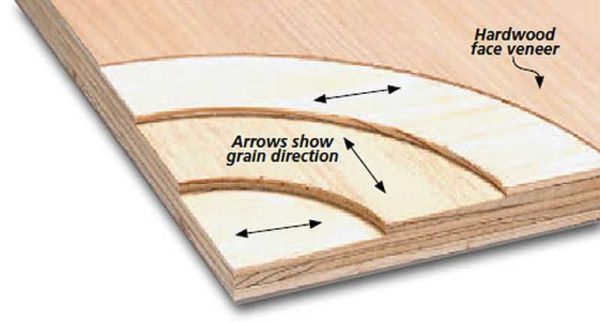
Layers are perpendicular to each other
If on the outer layer the veneer fibers are directed along the long side, the plywood is called longitudinal. It has great flexibility. If the veneer fibers are located along the short side of the sheet, plywood is called transverse and is used where high bending rigidity is required.
Moisture resistance
Since glue is used in the manufacture, the entire material has a fairly high degree of water resistance. There are several popular brands of plywood:
- Moisture resistant marked with FC. For its gluing, a glue based on carbamide-formaldehyde resin is used. That is, there is formaldehyde emission. With an emission class E1 and below, it can be used indoors or for the manufacture of furniture.
-
Plywood of increased moisture resistance - FSF. The same glue is used only with water-repellent additives. Can be used for outdoor use.
- FSF-TV. The same water-repellent plywood but with flame retardant additives.
- Laminated - practically insensitive to moisture.
If you need material for indoor use and don't want to worry about formaldehyde in the air, look for the FBA brand. It is environmentally friendly, but only suitable for rooms with normal humidity. The FB brand does not swell even under water, there is also BS aviation plywood. She still does not react to chemical environments. It was used in the construction of ships and airliners.
Surface finish
The outer layers of plywood can be sanded during production. There are such types:
- Unpolished. No surface treatment. Marked with NSh.
- Only one side is sanded to smoothness. Sh1 is added to the marking.
-
Both sides are sanded - Ш2.
Plywood sanded on both sides is used for the manufacture of furniture. For construction sites, both smooth sides are rarely needed. Usually, if polished is used, then Ш1. And then, if this material is used for decorative cladding. More often at a construction site, an unpolished one is needed - it provides better adhesion to other materials.
By destination
Also, plywood is very convenient to classify according to the methods of application, which we will consider below.
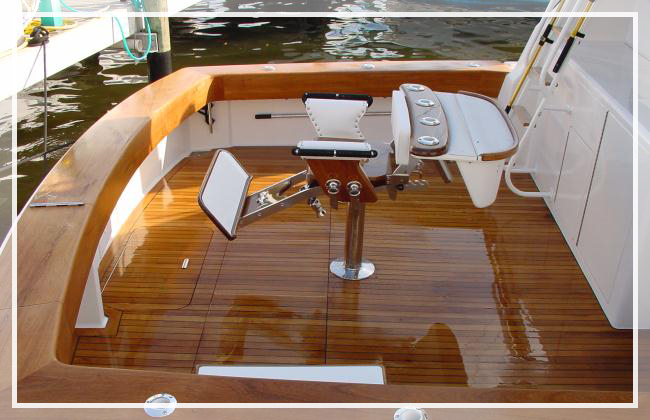
This type of birch plywood is also called "marine". Consists of the FB brand, i.e. it is impregnated with the most moisture-resistant bakelite glue under high pressure and temperature. Therefore, it can be successfully used in the construction and decoration of ships, boats, yachts and other floating facilities, as well as, wherever a material is required that can withstand heavy loads and not deform from rotting during prolonged operation in conditions of constant humidity: ports, docks, berths and other structures.
Furniture

Furniture plywood must meet certain requirements, especially for childcare facilities. This is, first of all, environmental safety (absence of substances harmful to humans), durability (furniture, during operation, usually has considerable loads) and a beautiful appearance. FK birch plywood meets all these requirements, since its strength is higher than that of coniferous, and it is impregnated with non-toxic urea glue. For the front sides of the furniture, it is better to use the first and second grade.
Construction plywood is mainly plywood of grades 3/4 and 4/4, which is used in internal hidden works: pre-finishing of floors, ceilings, walls; construction of interior partitions, flooring, podiums; leveling of the "rough" floor, frame for a stretch ceiling, etc. Due to its lightness, strength, heat / noise insulation properties, ease of use, as well as low cost, it is used wherever there are no increased requirements for a beautiful appearance.

This type of plywood is made from the FSF brand, impregnated with formaldehyde glue under special conditions, as a result, in terms of strength and moisture resistance, it is sometimes compared with steel, since, having a high density, it easily resists prolonged mechanical stress. Such qualities are required in order to apply it in the most demanding industries: the construction of aircraft, helicopters, large and small ships; in the car building and automotive industry.
Formwork
Formwork plywood is used in the construction of a concrete foundation, therefore, it must have exceptional qualities in terms of strength, moisture resistance, resistance to adverse environments and various deformations (swelling, drying out, cracking, etc.).
All the specified quality requirements are met only by FB film faced birch plywood with the maximum number of layers (thickness 18 mm for walls and 21 mm for floor). The process of laminating sheets with a protective film greatly enhances the basic qualities of this building material: the density approaches almost 700 kg / m3, and the maximum strength is: along the fibers at least 55 MPa, across the fibers - at least 25 MPa. Due to these qualities, this material is durable and economical, i.e. after the construction of the foundation, the sheets can still be reused.
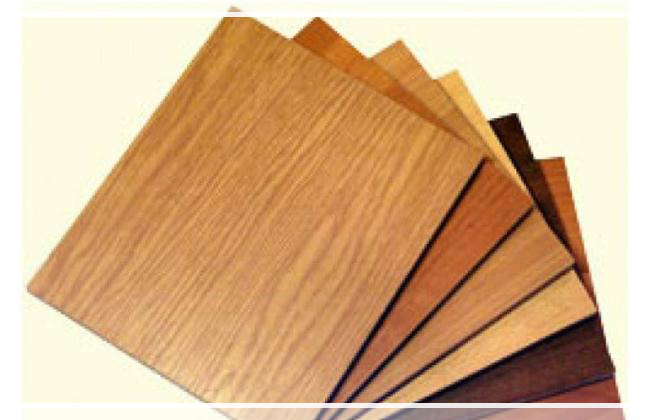
Decorative plywood has the FC brand and is made from various types of wood, but, of course, from the elite or first grade, because it is the naturalness of the surface pattern that is appreciated. Also, to preserve the appearance and other valuable qualities of wood, it is either laminated or coated with a special varnish. Main application: exterior and interior finishing, decoration, interior design, furniture, DIY crafts, etc.

It is also called "automobile" - it is laminated or mesh-ribbed (if you need a minimum of sliding) FSF plywood. Such plywood is used for the manufacture of various parts of trucks: upholstery of the metal frame of vans, flooring, door upholstery, etc. Due to their strength and moisture resistance, such parts can be operated for a long time without fear of deformation or wear. Also, the advantages include ease of installation - almost all work can be done by hand and with little time.
Manufacturing process
The plywood manufacturing process takes place in several stages.
Gluing
On specially equipped tables, veneer sheets of the same size are placed. Their surface is cleaned of wood dust and small debris so that unnecessary bumps are not created during gluing. Further, they are collected and grouped by size into stacks for future gluing of each plate.
First, coniferous plywood is made as the inner layer and the future frame. A moisture resistant glue, bakelite film or resin is applied to the first sheet. From above, it is pressed with the next sheet of veneer, as a result, a kind of sandwich is obtained. The process can be repeated until 3 or more layers are obtained. All work is carried out in well-ventilated areas due to the increased toxicity of some substances in the glue.
Often, the number of layers is increased to increase strength. For example, this method is used during the production of construction plywood.
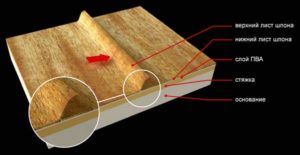 Plywood gluing process
Plywood gluing process
When gluing the wood fibers of each new layer, they try to place it perpendicular to the previous one, which increases the strength of the future structure several times. If the number of layers in the board is even, this means that the direction of the internal wood grains is parallel to each other. To obtain wide full-size sheets, the method of ribbing along the longitudinal edges is used.
If damaged areas are found on the sheets, they are cut out and replaced with special pre-prepared patches. The damaged veneer is tried to be used to create the inner layers of plywood.
Sometimes on the cut of the sheet, you can see sharp changes in the color of the fibers with black inclusions. This suggests that the manufacturer saved on the purchase of high-quality wood, used rotten second-grade raw materials or violated the technological process of manufacturing products. Such a plate rarely withstands the required loads and can collapse after a short time.
Cold bonding or heat treatment under pressure
The first method - with cold gluing, a sheet of plywood is placed in a press and left there at room temperature for 6 hours. After solidification, it is sent to the drying stage.
The second method - the finished carefully glued sheets are sent under a heat press, where, with pressure and high temperature, the joints gain final strength.
 Plywood pressing process
Plywood pressing process
Coating application
In a separate workshop, the surface is ground and various coatings are applied. To do this, use all kinds of varnishes, paints or ready-made stickers with images.
Depending on the coating, plywood is divided:
- For facing - consists of several layers of peeled veneer. Has a cladding on one or two sides.
- Film faced plywood - the coating most often imitates a wood structure.
- Sanded and not sanded - a specific texture is created on the surface.
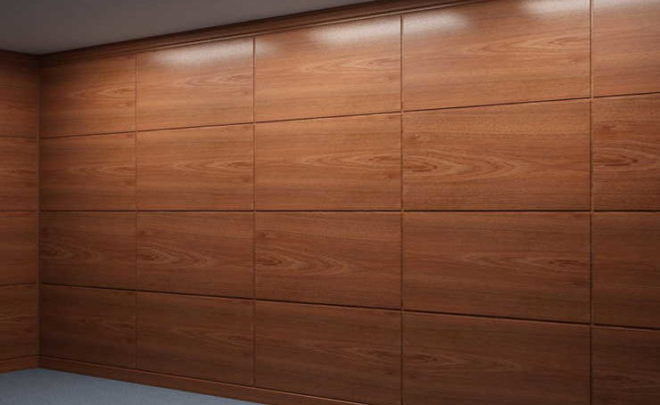 Plywood cladding
Plywood cladding
Features of the production of different types of plywood
Bakelized plywood - has increased structural strength. The effect is achieved by impregnating veneer sheets with bakelite resin with further pressing, under high pressure at a temperature of 270 ° C.
Waterproof - water-resistant phenol-formaldehyde or urea-formaldehyde glue is used for production.
Profiled - has a complex wave-like structure of fibers to increase the longitudinal strength.
Reinforced - a layer is placed inside that gives additional strength to the future slab, the insert can be metal-plastic, fiberglass or in the form of a metal mesh.
Aviation plywood - made from birch veneer (one of the lightest materials). It can be used in aircraft construction and the creation of lightweight structures.


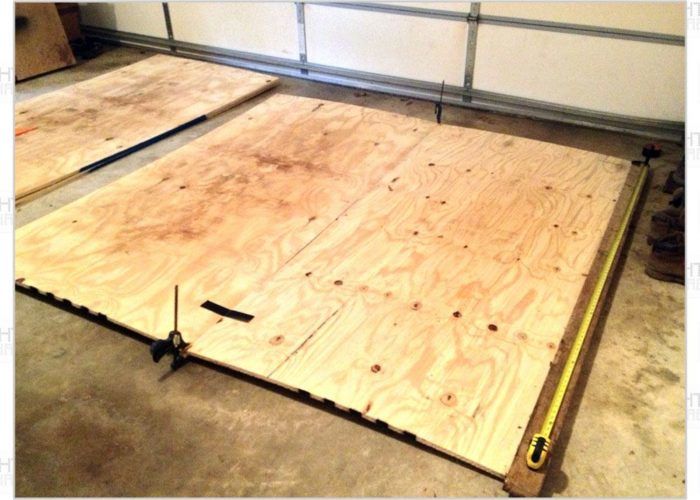

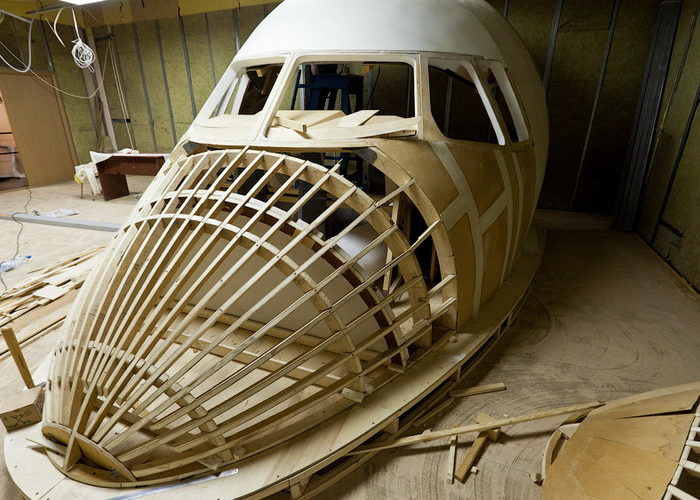
Package
Finished products, depending on the size and wishes of the customer, are packed in various moisture-proof materials and boxes.
The production of plywood does not require large investments for the purchase of equipment and the launch of the production process. The principle of the technological process is simple and low-cost, therefore every entrepreneur can start his own business.
Plywood thickness and purpose
The thickness of the plywood sheet depends on the number of veneer layers. Each of them can be from 1 mm (peeled) to 3.5-4.0 (planed). Rotary cut veneer material is more flexible. In terms of strength characteristics, planed is better.
Sliced and peeled veneer production
The layers are connected with glue under the press, so that the direction of the wood grain in them does not coincide - this significantly improves the material's ability to withstand mechanical damage. The composition of the adhesive determines the level of moisture resistance and safety of plywood:
- FSF (glued with phenol-formaldehyde resins) - used only for non-residential premises and outdoor work, high moisture resistance (thickness 4-40);
- FKM (melamine resins are used) - average indicators of water resistance and safety;
- FC (formaldehyde and urea-formaldehyde resins) - used exclusively for internal work, does not withstand moisture (thickness 3-24);
- FBA (glued with albuminocasein glue) is an environmentally friendly material, non-moisture resistant (they produce sheets with a thickness of 3-8);
- FB (or bakelite plywood) - withstands any environmental influences, including high humidity, open fire, mechanical damage (produced with a thickness of 7-40), is used in shipbuilding, car production, the construction of podiums, stadiums.
Bakelized (bakelite) plywood
Thickness 3 mm
Plywood with a thickness of 3 mm or less is called aviation plywood. Previously, it was used in aircraft construction, now it is used mainly in modeling. The material bends easily, so unusual interior things are made of it. Available in two sizes 1525x1525 and 1525x1830. Packaged in packs of 130 pcs. The total weight is 590 and 707 kg, respectively.
Thickness 4 mm
The scope of use of such a sheet is already wider. It is suitable for the production of furniture, wall decoration and even flooring. It usually consists of 3 veneer layers. The most popular size is 1525x1525.
Thickness 6.0, 6.5mm
Five-layer sheets for construction and furniture assembly. The thickness allows making fragments up to 3 meters long. The most common sizes: 1525x1525, 1220x2440, 1500x3000.
Plywood 8, 9.10 mm
A sheet of 7 layers of veneer. It is used both for decoration and for the production of furniture. The material will withstand the stress of a floor when laid in one layer. Available sizes: square 1525x1525, rectangle 3000x1500, 1220x2440.
Slabs 12, 15 mm
Plywood sheets that are thicker than 12 are called slabs. They consist of 9 or more layers of wood. They are used for the construction of structures with a high load: racks, partitions, floor.
Plates 18 - 30 mm
For the production of these boards, 15 or more layers of peeled veneer are glued together. When using sliced, their number is about 2 times less. Such plywood is very durable, it is used for the equipment of interfloor floors, decking, formwork for the foundation, the construction of summer kitchens.
Plywood 35-40 mm
The thickest slabs produced by factories are used in the production of pallets, vibrating presses, tabletops, stairs.The sizes are various: 1220x2440, 1250x2500, 1500x3000, 1525x3050.
The standard provides for the maximum deviation of the sheet thickness from the declared one.
Maximum deviations allowed by GOST are invisible to the eye
Interesting: Standard brick - dimensions, characteristics, areas of use
FK and FSF plywood applications - clear examples
So, we know that sheets, in which the veneer is bonded with phenol-formaldehyde glue, have high moisture resistance and great strength. We also considered that FC plywood is a more environmentally friendly material, and such quality as decorativeness is inherent in it, thanks to the outer layers. Where is it better to use both types? As a rule, FSF plywood is used for the construction of frame buildings, including for external cladding of prefabricated wall panels, of course, with subsequent processing and finishing. Also, this material is suitable for the assembly of lightweight bodies of some vehicles or trailers.
Plywood classification by purpose
The area of application of plywood (laminated, sanded, moisture resistant and other types) is not limited to construction, due to its properties the material is extremely in demand in various fields.
Ship. Only the highest quality types and grades of moisture-resistant plywood FB (on bakelite glue) are used for finishing shipping facilities, which work perfectly in conditions of high humidity and aggressive environments.
Furniture. The types of plywood used for furniture must be environmentally friendly, wear-resistant and durable. As a rule, combined FC plywood is used for furniture.
Construction. In the construction industry, as a rule, grades 3/4 and 4/4 of birch plywood are used. These types of plywood can be used for floors, walls and other structures as a rough finish.
Aviation. For these purposes, FSF plywood grades are used. This plywood has excellent technical characteristics and is ideal for such challenging and demanding industries as aircraft, ships, railcars and automobiles.
Formwork. To create the formwork, FB film-faced plywood is used, which has excellent characteristics in terms of moisture and wear resistance, strength and exposure to an aggressive environment.
Decorative. FK plywood is used for finishing the premises. This type of plywood should have excellent outer layer characteristics (flat surface with textured pattern). Plywood of this type, as a rule, is made from valuable wood species, or from wood of the highest grade.
Automotive. For cars, as a rule, FSF plywood with a laminated or mesh-ribbed surface is used. Plywood has high strength, moisture resistance and durability. It is used for covering all elements of the truck body (walls, floor, doors, ceiling).


